by Angelica Grindle, Ph.D.
The Goal—Develop a World-Class Safety Culture
Novinium® provides cable rejuvenation services to the aging infrastructures of large industrial and utility companies. Due to their patented process for extending the life of underground cables, they have experienced phenomenal growth—expanding eight-fold in the last six years. The majority of Novinium employees are electrical linemen who work in the field delivering cable rejuvenation services.
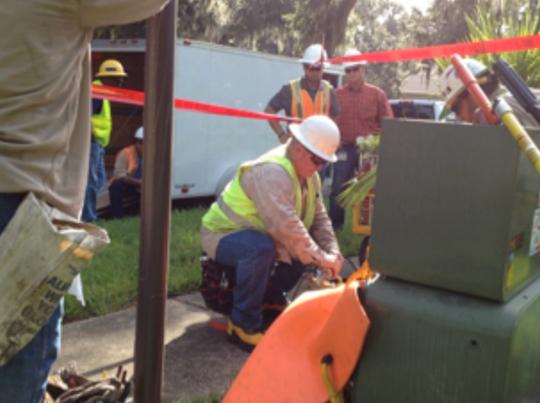
While they have historically had very few injuries, there is an inherent risk for serious and life-threatening injuries because their work requires interaction with high-voltage electricity. Therefore, Novinium leaders decided to proactively build a world-class safety culture into their planned growth as leaders in cable-rejuvenation technology.
Novinium leadership understood the benefits of implementing a behavior-based safety (BBS) process to increase the consistency of safe behaviors. However, they also understood that for a BBS process to be successful it needed to be a system where leaders were visibly supporting safety, employees were actively engaged in managing the process, and everyone was focused on removing barriers to safety. A Values Based Safety® process builds in all of those features and Novinium® contacted Quality Safety Edge (QSE) for assistance.
The Challenge—Independent workers and dispersed work groups
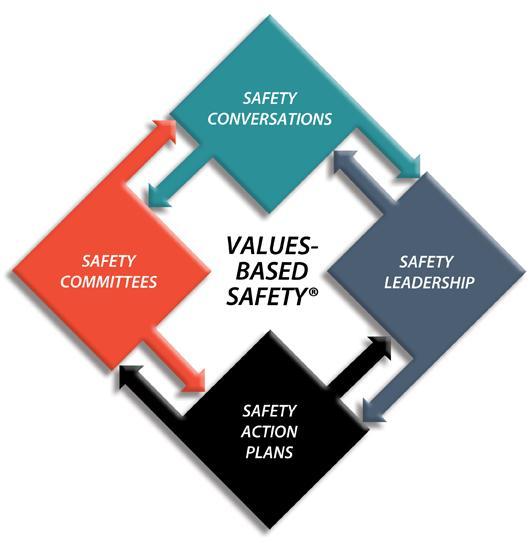
Novinium is based in Auburn, Washington. However, their clients are distributed throughout the United States and Canada (and, through partnerships, across the world). Projects can last from a few weeks to many years and can involve anywhere from one to 10 Novinium employees on a project. Even when 10 people are assigned to a project, they are spread across a city in crews of two or three. As a result, Novinium has a workforce that is geographically dispersed and primarily composed of independent workers and very small work groups.
Given this unique organizational structure, three main challenges arose:
- How would Novinium customize a Values Based Safety® process to work with independent workers and dispersed work groups?
- How would they implement the process and do necessary training when employees are geographically dispersed?
- How could they manage the process when steering committee members never see each other face-to-face?
- Designing a process that works!
Every organization is different. It is critical that the people who will actually be using the project be the ones who design it! To accomplish this, Novinium selected a design team from nominations solicited from employees by Quality Safety Edge during the assessment. In total, the Novinium design team included nine injection technicians. A safety professional, engineer, and sales representative also joined the team in order to align the company’s safety focus across all departments.
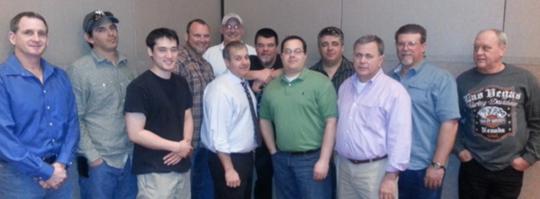 The design team met four times over a six-week period to design all components of their Values Based Safety® process. In between these meetings, team members shared information about the process with others, thus building buy-in and understanding across the organization throughout the design process. To accommodate the geographic disparity, the meetings were held at locations around the country with the final meeting held near the corporate headquarters in Seattle so that the team could present the plan to leadership. This leadership presentation was also a great opportunity for Novinium leadership to recognize the effort and dedication of the design team members. Kurt Wangenheim, Vice President of Operations, recognized each team member with a custom-designed jacket.
The design team met four times over a six-week period to design all components of their Values Based Safety® process. In between these meetings, team members shared information about the process with others, thus building buy-in and understanding across the organization throughout the design process. To accommodate the geographic disparity, the meetings were held at locations around the country with the final meeting held near the corporate headquarters in Seattle so that the team could present the plan to leadership. This leadership presentation was also a great opportunity for Novinium leadership to recognize the effort and dedication of the design team members. Kurt Wangenheim, Vice President of Operations, recognized each team member with a custom-designed jacket.
Design team members solicited ideas for a name for Novinium’s Values Based Safety process and decided upon “nobs” (Novinium Behavioral Safety).
Implementation
Implementing a process when employees are geographically dispersed is a challenge. To overcome this, Novinium conducted all training in four regional centers (Baltimore, Denver, San Antonio, and Seattle) to allow for easier travel and less production downtime.
Observation and Feedback
Three Novinium Trainers—certified by Quality Safety Edge—trained everyone in the company in the right way to conduct observations and give effective feedback, including those in sales, engineering, and supply chain regardless of whether they were office- or home-based. Being a voluntary process, this training allowed everyone to make informed decisions about their involvement in nobs. At each of these training sessions, the local design team members hosted a kick-off event to create excitement and interest. They served pizza and gave everyone specialized, orange clipboard boxes with the five observation-and-feedback checklists and job-aids inside.
Leadership
Although this is an employee-designed and managed process, leaders have a critical role in supporting the process. In addition to the observation-and-feedback training, all leaders from crew leaders through executive leadership attended a leadership workshop. During this workshop, Dr. Grainne Matthews, QSE’s Vice President Europe, helped leaders define and understand their role of supporting, monitoring, and participating in the process.
Novinium goes virtual in managing their process!
So how does an employee-managed process work when the team is spread over an entire country? This was the most challenging question that the design team had to answer. Their solution was simple, yet elegant—go virtual!
The nobs Steering Committee is composed of the employee representatives from the design team. Each nobs member is assigned as a coordinator for a specific component of the process. These include the following:
- Chair: Tracks members’ performance and ensures the overall integrity of the process
- Scribe: Assembles the completed Agenda worksheets for each meeting and maintains a list of commitments made by members
- Budget Coordinator: Ensures the Steering Committee uses its budget wisely and follows principles of Behavioral Safety
- Communication Coordinator: Publishes all written communication and arranges all presentations by the Steering Committee members at leadership and employee meetings
- Data Coordinator: Maintains all documentation related to nobs including updating checklists for Safety Action Plans and when the Steering Committee changes the focus behaviors
- Group Celebration Coordinator: Leads the team in planning group celebrations that will involve everyone in celebrating goals met
- Individual Recognition Coordinator: Tracks who earns Individual Recognition for participation and makes sure the Steering Committee delivers it
- Safety Action Plan Coordinator: Tracks whether the Safety Action Plan is implemented as intended and whether it improves behavior and reduces risk
- Coaching Coordinator: Assigns each Steering Committee member to an employee so that that everyone receives regular coaching
- Leadership Liaison: A member of management attends all Steering Committee meetings to remove any barriers they may encounter in managing the process.
- Safety Liaison: A member of the Safety Department also attends to provide expert information and resources for the Steering Committee’s Safety Action Plans.
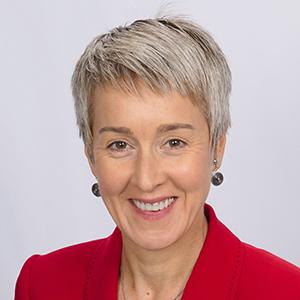 Dr. Matthews created a detailed agenda identifying the key activities for each component. The nobs team meets via an online meeting service for one-hour, twice per month using this agenda to guide them through all facets of successfully managing their process. In the first meeting, the team focuses on participation and involvement. The second meeting is dedicated solely to safety action planning. Prior to the meeting, each coordinator prepares his/her section of the agenda and sends it to the scribe to compile. At the meeting, the chair passes control of the online presentation to the coordinator for each section. The coordinator presents his/her part and leads related discussion and decision-making. When complete, the chair then passes the presentation control to the next coordinator. Meanwhile, the scribe notes action items and assignments. While on the surface this seems a simple solution, in practice those of us who use virtual meetings know it is difficult to achieve real discussion and problem solving online. As such, Dr. Matthews held a two-day training to teach the Steering Committee members the components of successfully managing their process over time and their corresponding roles. They then practiced the virtual meeting using the custom agenda.
Dr. Matthews created a detailed agenda identifying the key activities for each component. The nobs team meets via an online meeting service for one-hour, twice per month using this agenda to guide them through all facets of successfully managing their process. In the first meeting, the team focuses on participation and involvement. The second meeting is dedicated solely to safety action planning. Prior to the meeting, each coordinator prepares his/her section of the agenda and sends it to the scribe to compile. At the meeting, the chair passes control of the online presentation to the coordinator for each section. The coordinator presents his/her part and leads related discussion and decision-making. When complete, the chair then passes the presentation control to the next coordinator. Meanwhile, the scribe notes action items and assignments. While on the surface this seems a simple solution, in practice those of us who use virtual meetings know it is difficult to achieve real discussion and problem solving online. As such, Dr. Matthews held a two-day training to teach the Steering Committee members the components of successfully managing their process over time and their corresponding roles. They then practiced the virtual meeting using the custom agenda.
“With our geographically diverse workforce, implementation of a VBS process was challenging, but our employees embraced the concept and proved it could be done, and done well.”—Kurt Wangenheim, Novinium Vice President of Operations
The nobs journey begins!
At the time of this writing, all employees and leaders are trained Observers. The steering committee has met twice and the virtual management plan went incredibly well. As Dr. Matthews stated after calling in to the virtual meeting, “The nobs Steering Committee far exceeded my expectations for their skill in managing their new process, especially given the challenges of video conferencing from ten different locations and four different time zones. I can’t wait to see the impact they will have on the level of safety for all of their colleagues.”
Congratulations to Novinium leaders for their demonstration of commitment to the safety of their employees and to the employee-led design team for their dedication and hard work creating their unique process. We will keep you posted on their progress as they continue their journey.
Nobs at-a-glance
Types of checklists: The design team created five checklists that align with job and risk types. These included switching and injection, enclosed space, driving, general (primarily office use), and warehouse.
Announcing observations: Observers use the bright orange clipboards given out during training as a signal that an observation is about to take place.
Who can do an observation? All Novinium employees can conduct observations and give feedback.
Who is observed? Observers can observe other employees, contractors, and, in the case of lone-workers, conduct self-observations.
What do observers do with the checklists after the observation? Observers can enter the observation information on their phones or laptops.
Recognizing participation in a disperse organization: The Steering Committee will acknowledge each person who turns in two checklists a week by speaking to them face-to-face or on the phone and letting the observer know how much their voluntary participation is appreciated.
Ensuring Quality: All Steering Committee members will also coach their colleagues during actual Observation and Feedback to constantly improve their effectiveness as observers. Novinium leaders support the idea of Steering Committee members traveling to where injection technicians are working alone to provide this coaching.
About Novinium
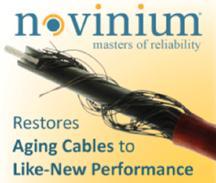 Underground cable rejuvenation goes by several names, including chemical restoration, dielectric enhancement, cable treatment, and silicone injection. Whatever the description, Novinium and its partners deliver the most advanced formulations and methods to extend the reliable life of underground cable. They offer a full spectrum of cable rejuvenation technologies to provide the highest level of circuit system reliability—always with the least capital intensity and the most advantageous life-cycle cost.
Underground cable rejuvenation goes by several names, including chemical restoration, dielectric enhancement, cable treatment, and silicone injection. Whatever the description, Novinium and its partners deliver the most advanced formulations and methods to extend the reliable life of underground cable. They offer a full spectrum of cable rejuvenation technologies to provide the highest level of circuit system reliability—always with the least capital intensity and the most advantageous life-cycle cost.
Novinium brings together the industry’s most experienced cable rejuvenation specialists. Over two decades of continuous and successful experience, together with unrelenting process and technology improvements, means that circuit owners enjoy the greatest reliability at the lowest capital cost. Their long history of delivery, expertise (330+ years combined) and dedication to process and technology improvements has allowed progressive utilities to reduce capital expenditures while improving circuit reliability. All of the commercially significant technologies in use around the world were invented by Novinium founders and their Novinium teammates.
Best of all, their customers see immediate, tangible results—capital investments in their technologies have saved over US $1 billion globally, and that number grows every day.
For more information about Novinium’s Services visit www.novinium.com or contact Carl Peterson, Novinium VP of Sales, at 253-288-7100.